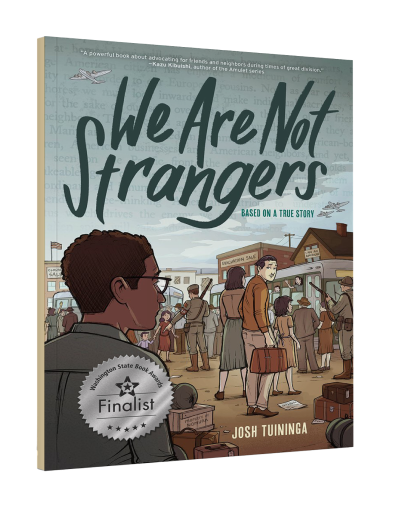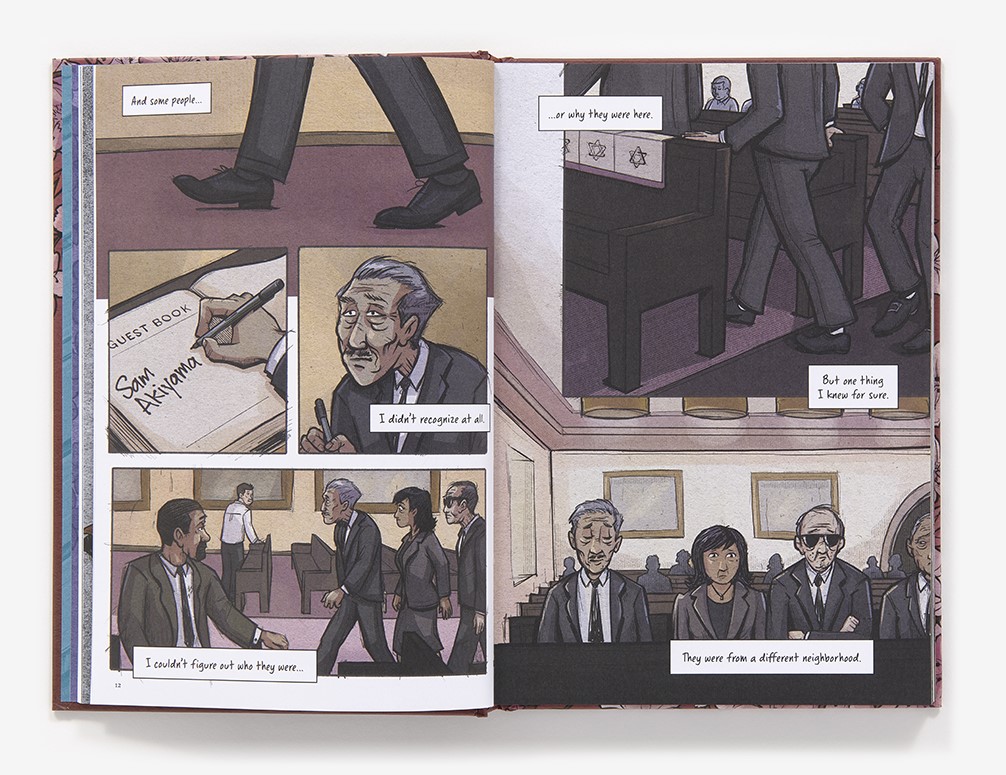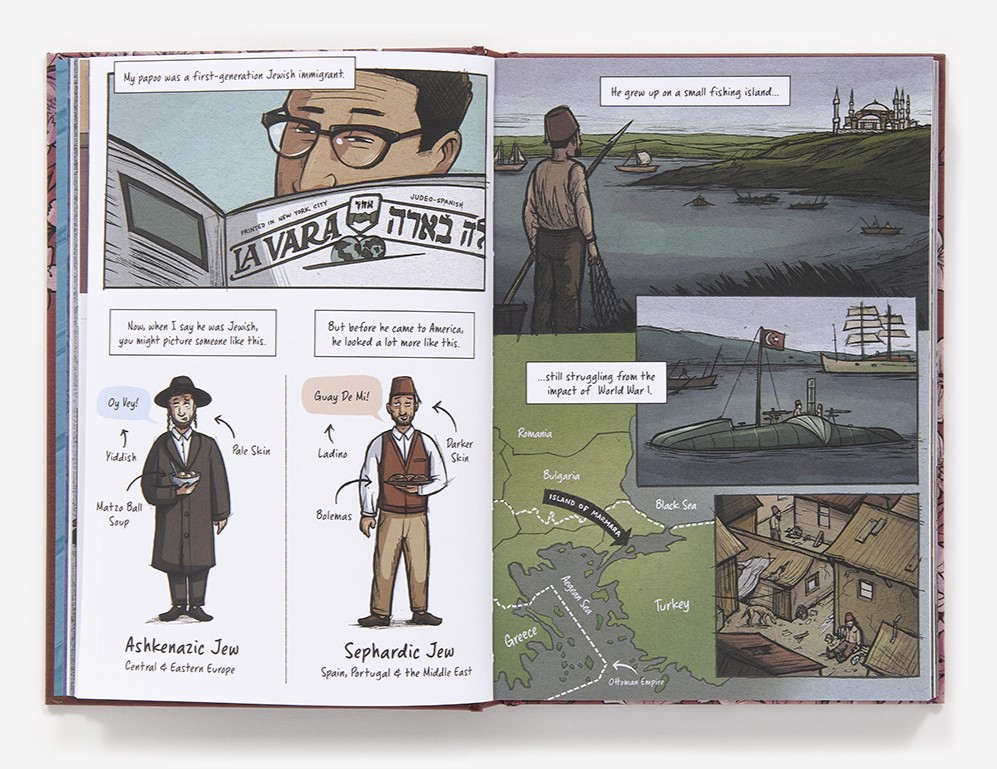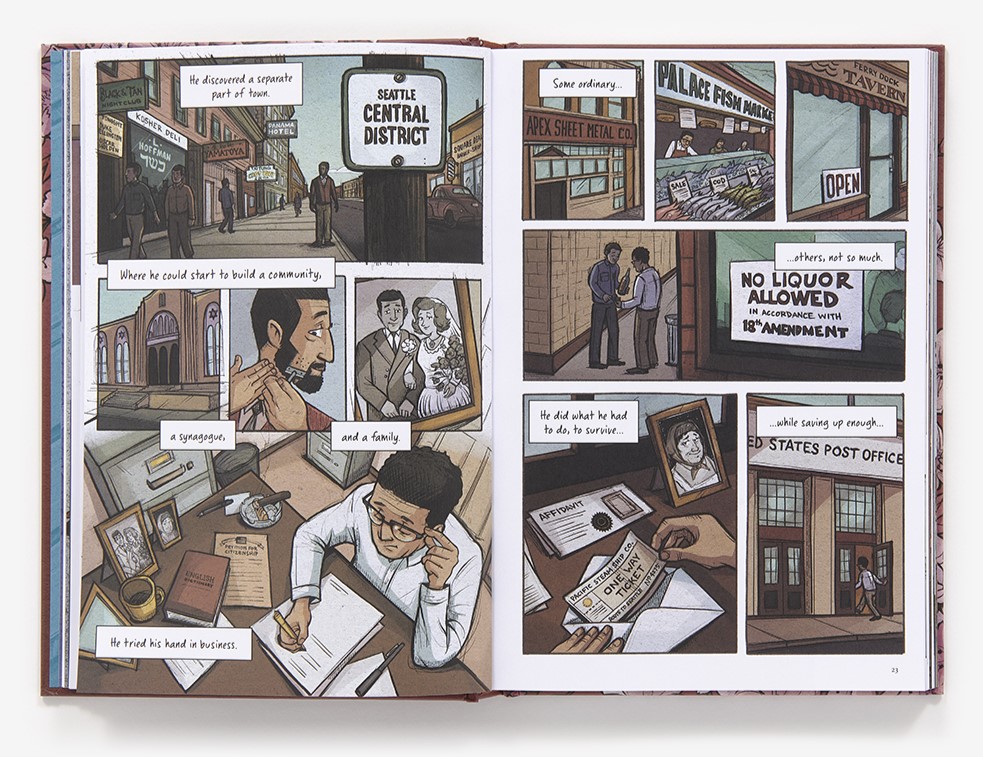
Growing up in the Sephardi tradition, all of the references to Jewish culture that I saw in media, pop culture, and comic books included characters that were stereotypically Ashkenazi. They were usually from New York, spoke some Yiddish, and ate matzo ball soup. I had never seen a Sephardi character represented in mainstream art. So, when I discovered an opportunity to write a story with a Sephardi main character based on my family history, I was elated.
We Are Not Strangers started with a story my Uncle Marco told me about attending his grandfather’s funeral. It was a typical Jewish event. Close family, friends, relatives he hadn’t seen in years. Tons of familiar faces. But there were some people he didn’t recognize at all. A handful of Japanese American guests began to arrive. No one knew who they were or why they came. My uncle found out his grandfather had helped these families when they were forced out of their Seattle neighborhood and incarcerated during World War II.
His story only took a few minutes to tell, but I couldn’t stop thinking about it. How does a Sephardi immigrant, with family still overseas threatened by the Holocaust, end up helping his Japanese American neighbors here at home?
This story is about the type of environment that can create this remarkable kind of relationship. Seattle’s Central District is the neighborhood where my family, Jewish immigrants from the Mediterranean, ended up settling when they came to America. The Central District was a place where immigrants and minorities landed and started their new American lives. And the more I learned about this area, the more I started to discover other stories of people who reached out to help their neighbors during the war.
As a comic artist, it felt completely natural to turn this story into a graphic novel. By doing so I was able to represent my own Sephardi cultural history in a highly visual way. I could draw important landmarks into the backgrounds of my scenes, like the original Sephardic Bikur Holim Synagogue and the vibrant Pike Place Market, where Japanese and Jewish families worked side by side. I could bring this incredible story to life in full color.
The strong connection between the Jewish and Japanese communities in Seattle isn’t very well known. With the help of historians at the University of Washington and Densho, the Japanese incarceration archive based in Seattle, this family story turned into an award-winning graphic novel and is being included in school curricula all over the country, which I am thrilled about.
There is so much we can learn from this story of allyship right now. We Are Not Strangers is a true story of real people from different backgrounds working together and helping each other during uncertain times – something we could use a lot more of these days. Sometimes it feels like we’re almost encouraged to look at each other as strangers. I hope that the stories I’ve highlighted in this book can act as a reminder that it doesn’t have to be that way.
We Are Not Strangers, written and illustrated by Josh Tuininga, New York: Abrams ComicArts, 2023.





